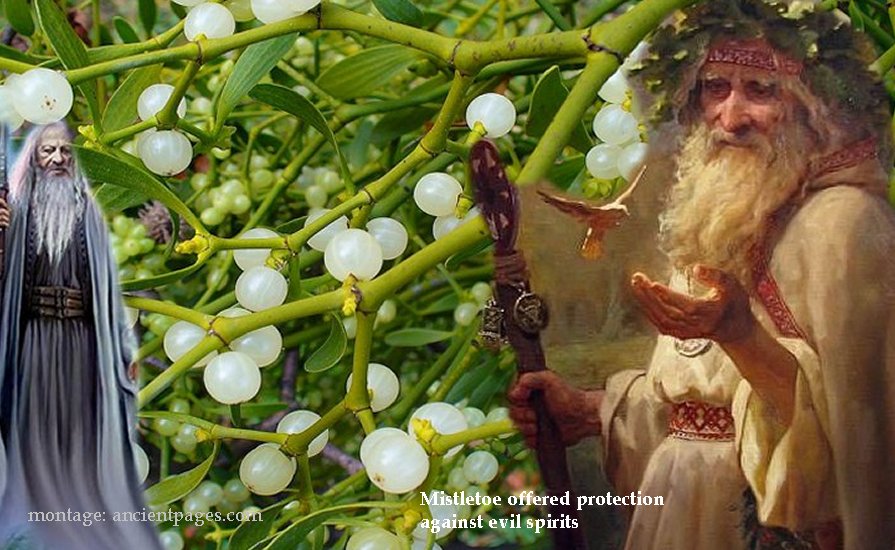Trees Are Deeply Rooted In Beliefs And Cultural Traditions Of Ancient People Around The World
A. Sutherland AncientPages.com - We like to sit on a bench under a tree for a moment to remember childhood play or contemplate, and we know living in nature is very positive.
Credit: Adobe Stock - Mason
However, the interesting question is, how much do we know about the trees and how important they have been for our ancestors?
Trees have accompanied us from the earliest times.
The ancients observed their dying and rebirth and knew that symbolically, a tree's crown reached heaven, and its roots touched the underworld. In a way, a tree was a link between the earthly and supernatural worlds.
Many legends, myths, and beliefs associated with the old cult of trees have been inspired by human imagination. Even today, trees play an important role in traditional cultures worldwide. In many mythologies, the tree is represented as the source of life, the center of the universe, and the cosmic tree.
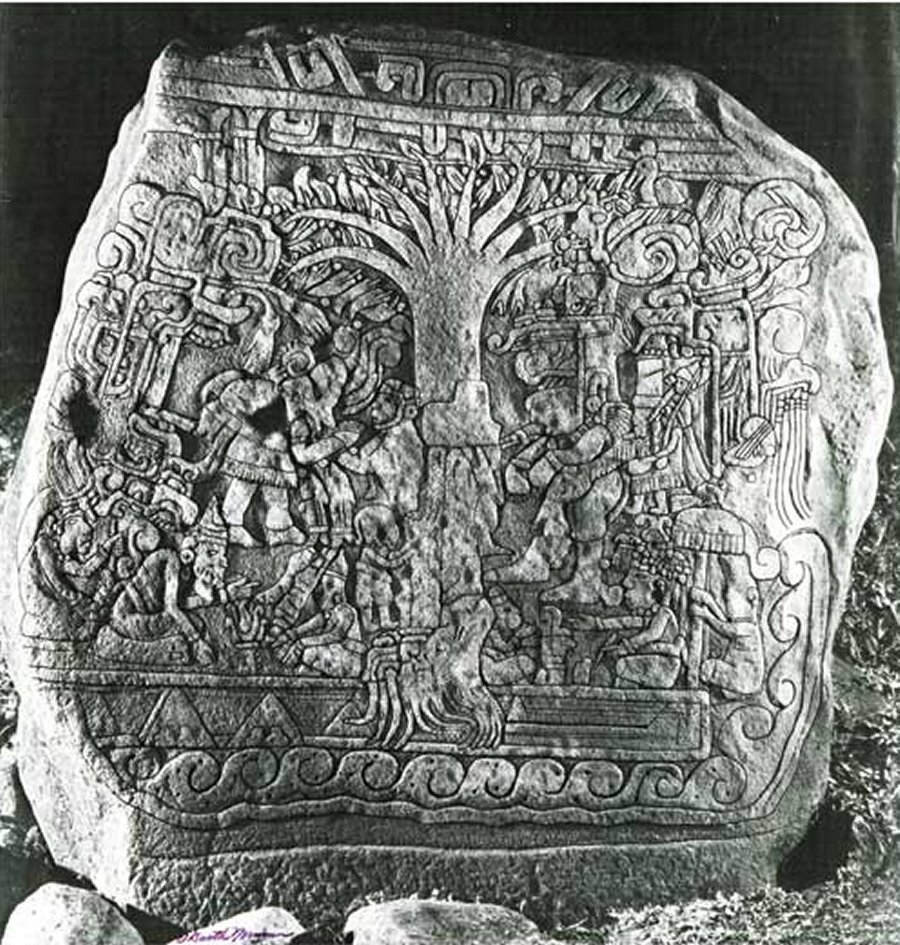
The tree in the center of the image is identified as a Mesoamerican Tree of Life, connecting the heavens and the underworld below. Early Photograph of Izapa Stela 5, 1976, V. Garth Norman
Among Christian symbols, we have the Easter palm and Christmas tree, and most civilizations of Mesoamerica cultures have an old belief in the power of the Ceiba Tree. At the same time, cedar is the most sacred tree in Native Americans' beliefs. Yggdrasil is an eternal and holy tree of life in Norse mythology, and in India, Kalpa Tree' Kalpavriksha' is an ancient wishing tree.
According to Babylonian beliefs, the trees were placed in the center, forming a starry sky rising toward the ocean, surrounding and sustaining the world. The trees' leaves were believed to be clouds, and their fruits were stars.
In Sanskrit scripts 'Upanishads, 'the cosmic tree is depicted with its roots lifted upward, and its crown is composed of four earthly elements: air, water, earth, and fire.
In the ancient tradition of the Slavic people, the tree grows out of the ocean, and in its crown, there are two birds - the devil and God (the creators of the dualistic world), and the tree's roots are a domain of the dragon (or serpent).
The serpent guards Yggdrasil in Norse beliefs, and the eagle lives right at the top of Yggdrasil's crown. Ancient religions of the Siberian people place a sacred birch tree in the center because on its branches live souls taking the form of birds.
In 'Shamanism,' Shirley Nicholson writes that according to the Semang Pygmies from Africa, "the dead goes to the Mapic Tree, and it is believed that this tree stands in the center of the island, where all the other dead are assembled. But the new arrivals may not wear flowers from the tree or taste its fruits until the dead who have preceded them have broken all their bones and reversed their eyes in the sockets so that they look inward…"
In myths and legends, a tree is not only a residence of human souls. The offerings were made under the trees - in the form of food, the blood of animals, or people. Ancient people also believed people were created from trees or turned into them. Ancient Greeks believed, for example, that humanity was made from an ash tree that symbolized bravery and strength.
Roman "Metamorphoses" by Ovid mentions a story of Philemon and his wife Baucis, who wished to be turned into a tree with roots after their death, and Odin, God in Norse mythology, had to hang on the magical tree of Yggdrasil for nine days and nights to come in possession of secret knowledge of the runes.
According to legends, the Buddha was born and experienced enlightenment under a fig tree, and while escaping from Egypt, the Blessed Virgin Mary, the Mother of God, found shelter in a lime or hazel tree, which is why these trees are sacred.
This article gives only some examples of the importance of trees in human lives. The tree has its natural roots and is deeply rooted in people's beliefs and traditions even today.
Written by – A. Sutherland AncientPages.com Staff Writer
Updated on January 20, 2024
Copyright © AncientPages.com All rights reserved. This material may not be published, broadcast, rewritten or redistributed in whole or part without the express written permission of AncientPages.com
Expand for referencesReferences:
Nicholson S. 'Shamanism'
Sumegi A. Dreamworlds of Shamanism and Tibetan Buddhism: The Third Place
Franklin A. The Illustrated Encyclopaedia of Fairies
More From Ancient Pages
-
 Huge Megalithic 7,000-Year-Old Site Dolmen Of Guadalperal Emerges From Dry Lake In Spain
Archaeology | Aug 22, 2022
Huge Megalithic 7,000-Year-Old Site Dolmen Of Guadalperal Emerges From Dry Lake In Spain
Archaeology | Aug 22, 2022 -
 Rock-Hewn Burial Shafts And 38 Symbolic Pots Discovered In Abusir Necropolis, Egypt
Archaeology | Feb 6, 2018
Rock-Hewn Burial Shafts And 38 Symbolic Pots Discovered In Abusir Necropolis, Egypt
Archaeology | Feb 6, 2018 -
 Abduction Of Idun, Goddess-Keeper Of Golden Juvenile Apples In Norse Mythology
Featured Stories | Nov 16, 2019
Abduction Of Idun, Goddess-Keeper Of Golden Juvenile Apples In Norse Mythology
Featured Stories | Nov 16, 2019 -
 World’s Oldest Toy Car – Could This 7500-Year-Old Discovery Be The Earliest Evidence Of The Wheel?
Artifacts | Sep 1, 2018
World’s Oldest Toy Car – Could This 7500-Year-Old Discovery Be The Earliest Evidence Of The Wheel?
Artifacts | Sep 1, 2018 -
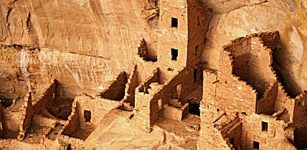 The ‘Anasazi’ Mystery: Sophisticated Civilization That Disappeared
Civilizations | Sep 20, 2015
The ‘Anasazi’ Mystery: Sophisticated Civilization That Disappeared
Civilizations | Sep 20, 2015 -
 On This Day In History: Reginald Walter Bonham Was Born – On Jan 31, 1906
News | Jan 31, 2017
On This Day In History: Reginald Walter Bonham Was Born – On Jan 31, 1906
News | Jan 31, 2017 -
 2,700-Year-Old Ancient City Of Limnai On Turkey’s West Coast – Discovered
Archaeology | Nov 22, 2018
2,700-Year-Old Ancient City Of Limnai On Turkey’s West Coast – Discovered
Archaeology | Nov 22, 2018 -
 Beautiful Legend Of The Christmas Rose – A Symbol Of Love And Hope
Ancient Symbols | Dec 24, 2018
Beautiful Legend Of The Christmas Rose – A Symbol Of Love And Hope
Ancient Symbols | Dec 24, 2018 -
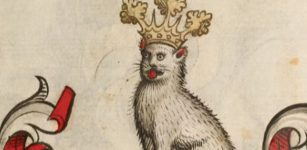 Cats In The Middle Ages: What Medieval Manuscripts Teach Us About Our Ancestors’ Pets
Featured Stories | Dec 24, 2022
Cats In The Middle Ages: What Medieval Manuscripts Teach Us About Our Ancestors’ Pets
Featured Stories | Dec 24, 2022 -
 Archaeologists Discover Previously Unknown Huge Galleries And Petroglyphs In Colorado
Archaeology | Dec 15, 2023
Archaeologists Discover Previously Unknown Huge Galleries And Petroglyphs In Colorado
Archaeology | Dec 15, 2023 -
 A 1,600-Year-Old Mosaic Accidentally Unearthed In Ancient City Of Yavne, Israel
Archaeology | Apr 26, 2021
A 1,600-Year-Old Mosaic Accidentally Unearthed In Ancient City Of Yavne, Israel
Archaeology | Apr 26, 2021 -
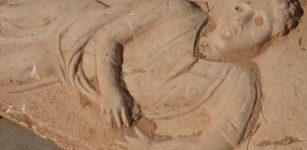 Unique 1,800-Year-Old Stone Sarcophagus Exposed In Ashkelon Building Site
Civilizations | Sep 6, 2015
Unique 1,800-Year-Old Stone Sarcophagus Exposed In Ashkelon Building Site
Civilizations | Sep 6, 2015 -
 200,000-Year-Old Grass Bed Discovered In South Africa’s Border Cave
Archaeology | Aug 14, 2020
200,000-Year-Old Grass Bed Discovered In South Africa’s Border Cave
Archaeology | Aug 14, 2020 -
 Exceptionally Long-Lived Ancient Form Of Hydraulic Engineering Unearthed In The Nile Valley
Archaeology | Jun 13, 2023
Exceptionally Long-Lived Ancient Form Of Hydraulic Engineering Unearthed In The Nile Valley
Archaeology | Jun 13, 2023 -
 Controversial Artifacts No One Wants To Examine Thoroughly: Is There Something We Are Afraid Of Discovering?
Ancient Technology | May 22, 2019
Controversial Artifacts No One Wants To Examine Thoroughly: Is There Something We Are Afraid Of Discovering?
Ancient Technology | May 22, 2019 -
 Mysterious Ancient Village In A Prehistoric Anomalous Zone – Unexplained Sightings And Sounds – Part 1
Featured Stories | Jul 27, 2020
Mysterious Ancient Village In A Prehistoric Anomalous Zone – Unexplained Sightings And Sounds – Part 1
Featured Stories | Jul 27, 2020 -
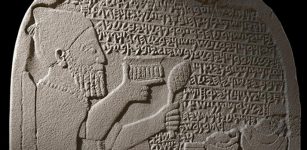 Ancient Kuttamuwa Stele And Iron Age Belief That Soul Lived In Funerary Slab
Featured Stories | Sep 10, 2016
Ancient Kuttamuwa Stele And Iron Age Belief That Soul Lived In Funerary Slab
Featured Stories | Sep 10, 2016 -
 Rare Ancient Underwater Maya Ruins And Salt Kitchens Discovered
Archaeology | Oct 13, 2022
Rare Ancient Underwater Maya Ruins And Salt Kitchens Discovered
Archaeology | Oct 13, 2022 -
 Ancient City Of Koh Ker Was Occupied Much Longer Than Previously Thought
Archaeology | Oct 12, 2018
Ancient City Of Koh Ker Was Occupied Much Longer Than Previously Thought
Archaeology | Oct 12, 2018 -
 Ancient Mystery From The Age Of Taurus And The Murdered Astronomer – Overlooked Secret In The North – Part 1
Civilizations | Oct 30, 2019
Ancient Mystery From The Age Of Taurus And The Murdered Astronomer – Overlooked Secret In The North – Part 1
Civilizations | Oct 30, 2019


